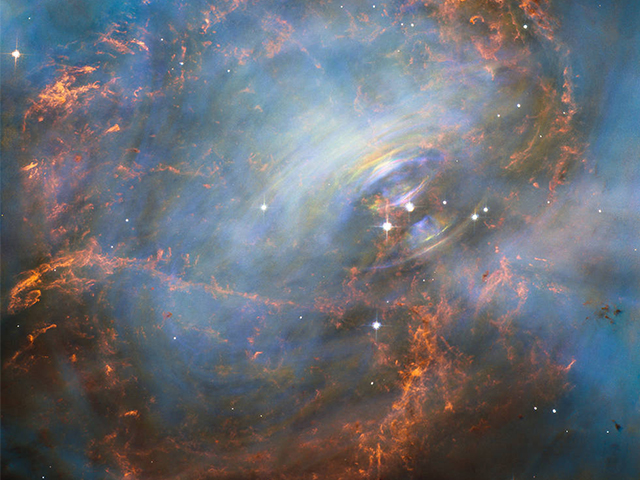NASA’s Hubble telescope has once again made history in astronomy: it has captured images of the supernova Crab Nebula’s pulsing “heart.”
The breathtaking Crab Nebula is located 6,500 light-years away in the constellation Taurus, oddly enough. The nebula is what is left of an ancient exploded star, which was initially documented by Chinese astronomers in 1054. The nebula itself was discovered 700 years later in 1928, when Edwin Hubble made the connection between the star the Chinese had seen and the new, whirling mass of gorgeous lights.
Images taken by the Space Telescope show the nebula’s heart – an inner region that sends out pulses of radiation and waves of charged particles at the very center. This heart is a neutron star, and has a mass about the same size as the sun but is compacted into an incredibly dense sphere that is just a few miles wide.
The neutron star emits rays of energy that make it look like its pulsating or beating as it spins 30 times per second.
In the Hubble photo, the region around the neutron star is visible, and the expanding remains around it. The telescope’s amazing capabilities have also captured the majestic swirls of glowing gases in red, as well as the misty blue glow created by radiation given off by a powerful magnetic force around the core.
The Crab Nebula’s pulsing “heartbeat” was first discovered in 1968, with astronomers thinking they had discovered a new kind of heavenly body. Modern science has proven that this is a figment of supernova remains called pulsars, or rapidly moving neutron stars.
NASA said that these neutron stars and their movements are important for completing observational experiments on a number of astronomical events, such as measuring gravity waves.
A statement from the space agency said, “The neutron star is a showcase for extreme physical processes and unimaginable cosmic violence. It is thought that these wisps originate from a shock wave that turns the high-speed wind from the neutron star into extremely energetic particles.”
























